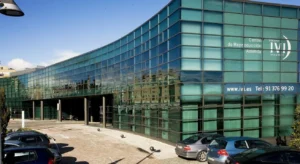Surgical treatments may help correct structural issues that lead to infertility in both women and men, including outpatient procedures that offer quick recovery times and minimal disruptions.
Fertility surgery options available to women include hysteroscopy or laparoscopy using small cuts, with small surgical tools to remove scar tissue and fibroids from the uterus; such procedures may also help treat cysts or polyps.
Endometriosis
Endometriosis is a condition in which tissue from the inner lining of the uterus protrudes outside the pelvic cavity and causes inflammation, scarring and infertility – as well as severe pain comparable to that experienced during menstruation. Women living with this condition might even go months without experiencing their period! Hormonal therapy may alleviate some symptoms but cannot cause pregnancy.
Endometriosis can be diagnosed through ultrasound imaging; however, in order to confirm its presence and remove affected tissue a laparoscopy procedure is needed. Laparoscopy is a minimally invasive surgical process during which surgeons insert a telescope-like instrument, called a laparoscope, into your body and pass small surgical instruments through it in order to identify endometriosis and remove affected tissues.
Women suffering from severe endometriosis may require open abdominal surgery known as hysterectomy to have the uterus and possibly fallopian tubes removed. Laparoscopic surgery, however, is often enough to improve chances of becoming pregnant while in vitro fertilization may be considered as an option if necessary. Fibroids and polyps can be treated through incision-free methods known as hysteroscopy that allow physicians to enter the uterus through a device and remove tumors, scar tissue or products of conception that remain after conception has taken place.
Fibroids
Uterine fibroids are noncancerous tumors that form in the muscle layers of the uterus. These growths may cause heavy menstrual bleeding and pain upon urination. When trying to become pregnant, myomectomy (removal of these tumors through abdominal, hysteroscopic or laparoscopic surgery depending on size/number) may be recommended by your physician; other options could include cutting off their blood supply via heat, cold or radiofrequency energy – myolysis).
When women suffer from severe endometriosis or blocked fallopian tubes, their doctor can remove lesions and scar tissue through laparoscopic surgery. This involves inserting a small, lighted scope with surgical instruments through their cervix into the uterus where saline injection expands the uterus to reveal any anomalies that cannot be seen through laparoscopy or hysteroscopy. Sometimes an abdominal incision is necessary in cases when abnormalities cannot be viewed using either technique.
if a patient doesn’t get pregnant after surgery, her doctor may suggest fertility treatment with in vitro fertilization (IVF). With IVF, the sperm and egg are fertilized outside the body before being implanted into the uterus – potentially increasing chances of twin or triplet pregnancies but increasing risks during and after gestation.
Scarring
Women struggling with infertility may benefit from minimally invasive surgical techniques that Yale Medicine specialists are adept at administering, which often help remedy their issue and boost a woman’s ability to conceive.
Alternatively, laparoscopy allows surgeons to access areas with scar tissue and remove it by inserting a thin, fiber-optic tube through a small cut under her belly; other surgical instruments may also be inserted at this time.
Surgery can also be used to correct blockage of the fallopian tube or remove abnormal growths like fibroids, polyps and cysts from within the uterus – abnormalities which contribute to fertility issues and are associated with pelvic pain.
Men can access various surgical options for treating infertility caused by blockages of their vas deferens or defective testicles producing sperm, such as varicocele surgery or scrotal varicosectomy to address infertility caused by blocked veins in their scrotum that restrict sperm flow and varicocele surgery (or varicosectomy) to remove enlarged veins which hinder its flow; these procedures can also be performed together with in vitro fertilization to increase chances of conception.
Surgery may be essential in treating infertility if other tests and treatments do not pinpoint its source, yet going under surgery may be emotionally distressful and it is wise to seek professional guidance or counseling services before undertaking fertility surgeries. To minimize stress during this process, mental health services must also be available nearby to offer support and counseling as necessary.
Congenital Anomalies
Certain congenital anomalies in both men and women may contribute to infertility, leading to surgical correction of abnormalities to improve chances of conception. Surgery to address varicoceles (a tangle of veins that block blood flow from the testes) or remove these masses can improve motility; similarly, anomalies of fallopian tubes or uteri can also be treated using minimally invasive surgical techniques.
Laparoscopy and hysteroscopy are among the many tools used by doctors to detect infertility, with laparoscopy involving making a small incision and inserting a thin viewing device (laparoscope) into the pelvic cavity to look for blockages, scar tissue build-up or any other issues which might impede fertility. Hysteroscopy uses a thin tube with light and camera attached that looks inside of uterine for growths such as fibroids and polyps – these procedures may lead to infertility diagnosis and treatments.
New surgical techniques and technologies enable most gynecologic surgeries to be conducted using minimally invasive approaches that involve smaller incisions for less pain and quicker recovery times. Most outcomes from minimally invasive surgeries are similar to open procedures; however, post-op adhesions (tissue sticking together after surgery) tend to be lower while there may be greater chances of pregnancy as a result of less-invasive surgeries.
Studies are necessary to assess the cost-effectiveness of interventions aimed at reducing surgery burden in LICs and LMICs; however, improved surgical services will likely lower both morbidity and mortality.





